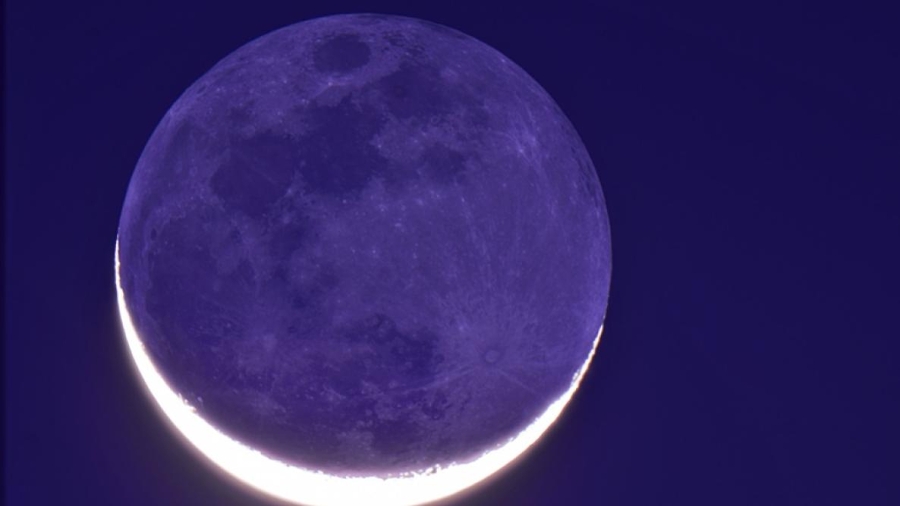What’s Up With The Moon This Week? Dr. Lawrence Camarota Explains The “Da Vinci Glow”
Author: News Bureau
Posted: Thursday, May 18, 2023 12:00 AM
Categories:
In the News | Faculty/Staff | Pressroom | School of Health and Natural Sciences
Macon, GA

Image Credit: NASA
Have you ever heard of the “Da Vinci glow?” We hadn’t either until the phrase started popping up in our news feeds a couple of days ago. According to the website earth.com, the Da Vinci glow is a celestial phenomenon that imparts a “ghostly illumination” to the Moon’s surface. This astronomical marvel is expected to be visible over the next few days around the period of the New Moon. In the 16th century, Leonardo da Vinci, the Italian artist, scientist, and architect (among other things), was apparently the first to theorize as to the cause of this “Earthshine.”
To learn more about the Da Vinci glow, we turned to our go-to astronomy consultant - Dr. Lawrence Camarota, Middle Georgia State University assistant professor in the Department of Natural Sciences.
What exactly is the Da Vinci glow?
“When we see the Moon, the light that we are seeing originally came from the Sun, and reflected off of the Moon’s surface. The Earth also reflects light onto the Moon; and the Earth is both bigger and shinier than the Moon, so earthlight on the moon can be as much as fifty times brighter than moonlight on the Earth. Da Vinci glow is when sunlight is reflected off of the Earth forming earthlight, which then shines on the moon bright enough to be seen from the Earth’s surface.”
Does the intensity of the Da Vinci glow vary depending on the atmospheric conditions on Earth?
“The glow comes from all of the earthlight that shines on the Moon. The overall reflectivity of the Earth will impact how intense the Da Vinci glow is. Leonardo Da Vinci originally hypothesized that the Earth’s light came primarily from light reflected off of the oceans, but today we believe that clouds and ice are larger sources of reflectivity. If the sunward side of the Earth has a very heavy cloud cover, then the Da Vinci glow will be brighter. On the other hand, heavy cloud cover can also make it more difficult to see from the ground.”
What are the practical applications of studying this phenomenon?
“Da Vinci glow has inspired much in our foundational understanding of light and astronomy. Leonardo Da Vinci was inspired to develop a theory of geometric optics partially to explain this mysterious glow. Almost a century after that, the existence and pattern of Da Vinci glow was used as an argument for the Copernican heliocentric model over the Ptolemaic geocentric model. The reflectivity of the Earth from cloud and ice plays a significant role in solar heating and climate change. In the upcoming years, astronauts from the Artemis program will live on the moon for a period of time, and they will experience this glow from the side of the moon.”
When and how are the best ways to see Da Vinci glow?
“The best times to see the Da Vinci glow are just before sunrise on the days before the new moon, and just after sunset on the days after the new moon. If you have a very clear view to the west you can probably see it around 9 p.m. on Saturday, May 20, or after 9:30 p.m. on the following days. As you get farther away from the new moon the Da Vinci glow will become fainter, but you will have more time between sunset and moonset to see it.
“The best time of the year to see the Da Vinci glow is usually in the spring. The reason for this is not fully known, but our leading hypothesis is because of a combination of snow in the northern hemisphere and clouds in the southern hemisphere making the Earth shine more brightly. The second-best time of year to see Da Vinci glow is in early autumn, but it can be seen at any time of year as long as the moon is in a crescent phase.”
Dr. Lawrence Camarota graduated with a B.S. in physics and a B.S. in aerospace engineering from the University of Florida. He earned a Ph.D. in physics with a focus on astronomy from the University of Arizona. He is a member of the American Association of Physics Teachers, the Royal Astronomical Society, and the Friends Society. His areas of interest are astrophysics, cosmology, electronics, and wavelets.